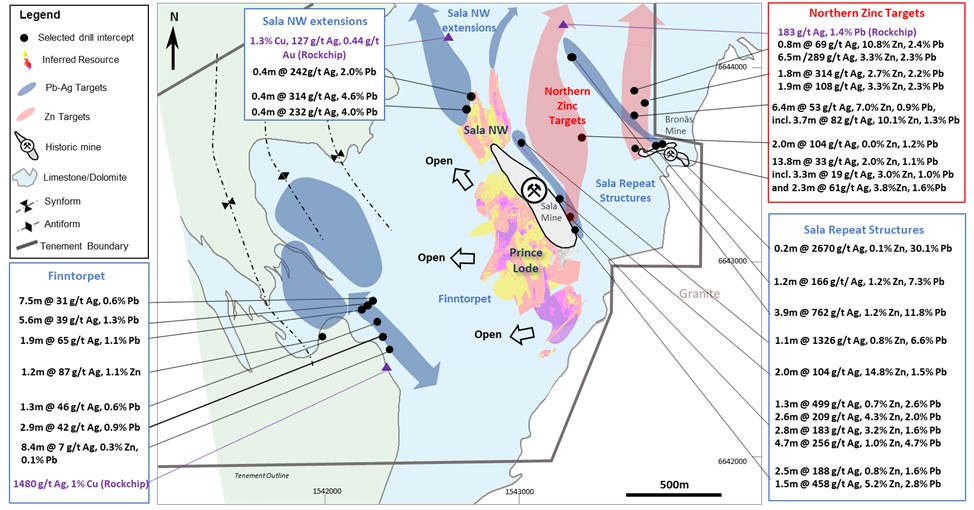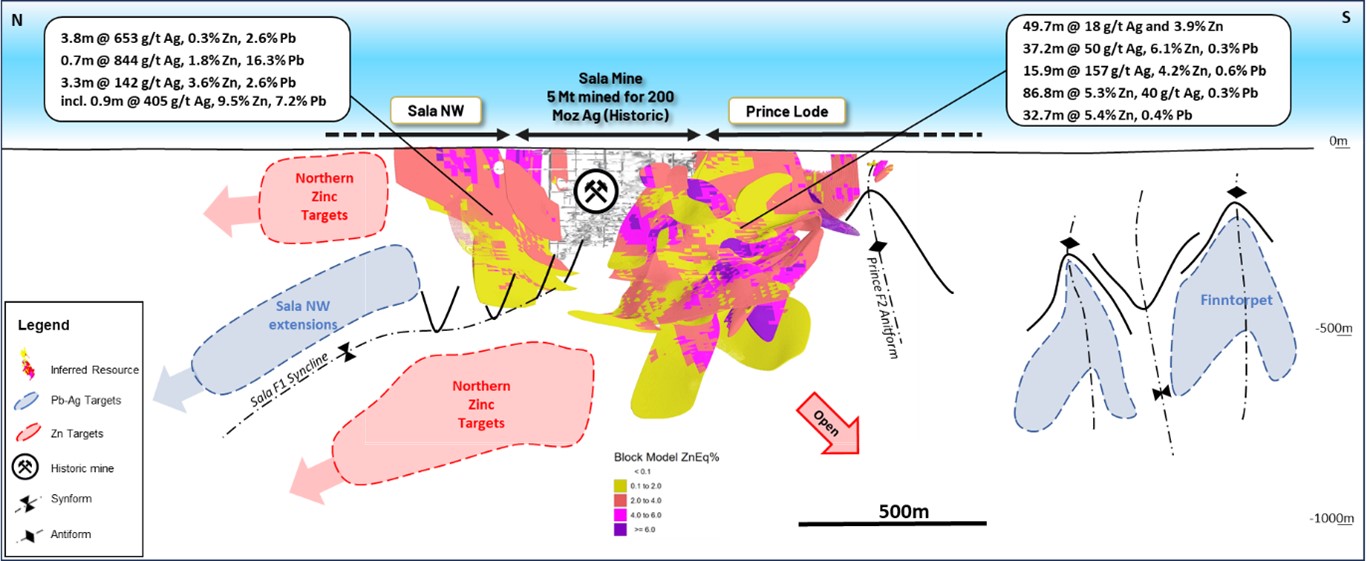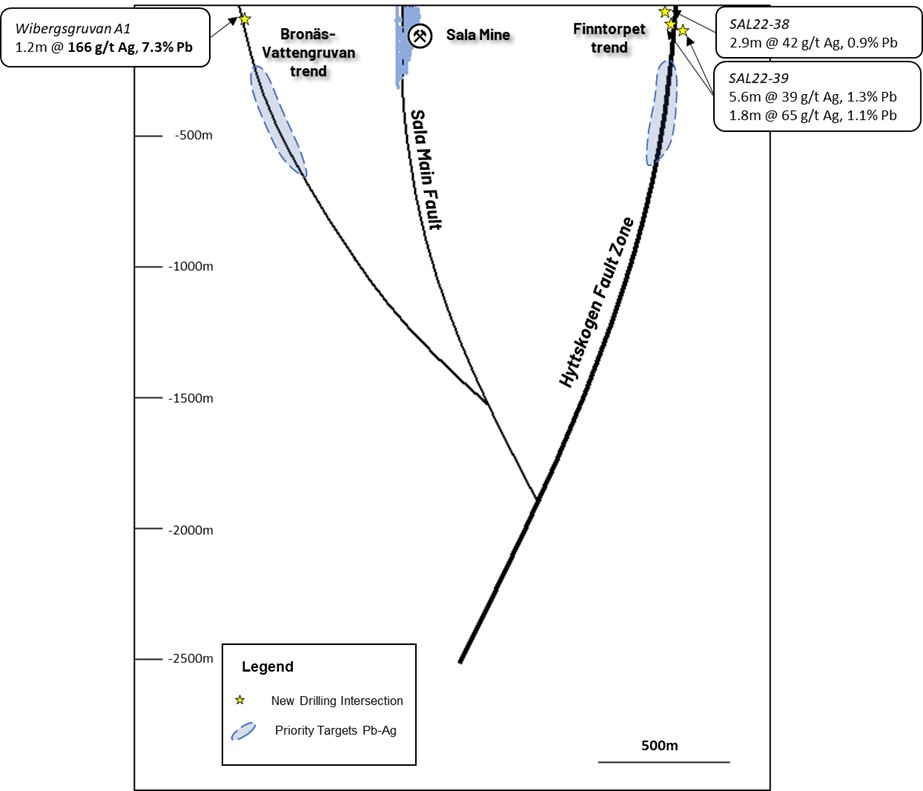Sala Zinc-Silver Project
Alicanto’s Sala Project is comprised of several exploration permits covering an area of 91km2 prospective for zinc and silver. Sala is located 85km from the Falun Project and 50km away from Boliden’s operating Garpenberg mine.
The Sala mine was previously one of the largest and highest-grade silver mines in Europe. Mining commenced at the end of the 15th century and continued until the mine closed in 1908. During its operational life, Sala is estimated to have produced more than 200 million ounces of silver at an estimated average grade of 1,244g/t, with silver grades reported as high as 7,000g/t.
There has been very limited exploration at Sala since the closure of the mine. Alicanto has completed over 28,000m of diamond drilling and reviewed over 35,000m of historical drill core, which continues to encourage the Company’s view of the ongoing prospectivity at Sala.
In just over twelve months of exploration, Alicanto successfully defined a maiden Inferred Resource of 9.7Mt @ 4.5% Zinc Equivalent (containing over 311,000t of zinc, 15Mozs of silver and 44,000t of lead) including a coherent near surface high-grade breccia zone dominated by semi-massive sphalerite containing 4.5Mt @ 6% Zinc Equivalent (containing 201,000t of zinc and 8.5Mozs of silver).
The Sala project consists of zinc-silver-lead mineralisation interpreted to constitute a classic intrusion-related zinc-silver-lead skarn deposit of Proterozoic age, hosted by a thick sequence of dolomitized stromatolitic limestone. Two distinct mineralisations are associated with the main Sala lodes:
- Galena-Silver dominated mineralisation (“Sala style”) which occurs in the upper stratigraphic level with hydrothermal alteration and mineralisation bleeding out from a vertical feeder fault (Sala main fault zone). A majority of the historically mined silver occurs in high-grade mineralisation along this fault.
- Sphalerite dominated mineralisation (“Prince style”) which occurs at a lower stratigraphic level as stratabound hydrothermal breccia lenses with local bonanza blow up structures.
Alicanto controls the largest part of the prospective limestone host rock in the region.
The maiden Inferred Resource estimate includes the Prince Lode, located immediately to the south of the historic Sala mine and the Sala style NW lode, a silver dominated continuation of the historic Sala mine trending northwest. Alicanto has identified numerous high-priority targets which have the potential for immediate Resource growth through step out drilling from the known mineralisation. These potential targets include:
- Sala repeat structures: silver-gelena rich structures north of the historic Sala and Bronäs mines
- Sala northwest extensions: continuation of the Sala mine trend plunging to the north and northwest
- Northern zinc targets: deeper sphalerite rich strata of the Price maiden resource continuing under and to the north of the historic Sala mine
- Finntorpet: broad zone of Sala-style mineralisation in the significant and previously untested Hyttskogen fault zone (parent fault to the Sala main fault from which the historic Sala production was sourced) to the south-west of the historic Sala mine



